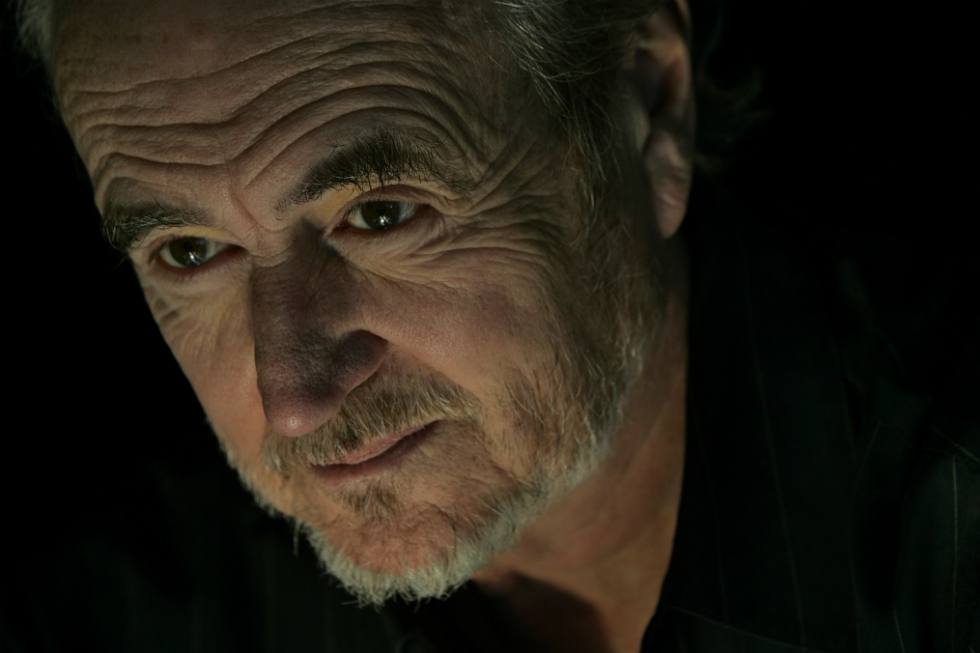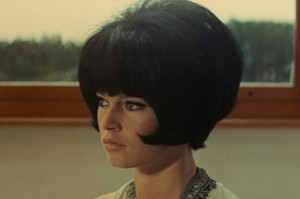Nine, Ten, Never Sleep Again: RIP Wes Craven (1939-2015)

Sam Meech thanks ‘older brothers, slack parenting and the video shop’ for introducing him to a master of the horror genre: a director who made cinematic and commercial re-incarnation his stock-in-trade…
This morning I awoke from a terrifying dream: I was flat hunting, and every place I found was insanely expensive to either buy or rent, forcing me to consider a complex long-term financing deal involving banks, relatives and pay-day loans. It is perhaps a sad indication of growing old that my nocturnal narratives are now haunted by issues as boring as housing. For many years, they were shaped by a man with a burned face, a filthy sweater and long knives for fingers. How sad I felt this morning then, to wake up to the news that Wes Craven — for so long the architect of my nightmares — had died a mortal death aged 76, following a battle with brain cancer.
I’m not usually one for joining in the Twitter hysteria that accompanies a celebrity death, but in this case I’ll make an exception. Wes Craven’s work indulged my young morbid fascinations, helping to shape me into the well-adjusted member of society I am today. More resonating perhaps was that his creations and the genre he inhabited played with the idea of death as something that could strike at anytime, but could also be defeated (or cheated), only for the threat to be reincarnated and re-framed in endless sequels and post-modern brackets.
As a child, I was exposed to his work thanks to older brothers, slack parenting and the video shop. A poster of a ghostly blue Heather Langenkamp, fast asleep as a deathly glove reached out for her, hung in my eldest brother’s bedroom and fascinated me endlessly. Upon seeing the actual film as an impressionable child, I immediately found a grotesque new hero, but was equally scarred for life — particularly traumatised by the sight of Tina (Amanda Wyss) being flung around the room and slashed to bloody ribbons by an invisible assailant.

I suffered bizarre recurring nightmares of a giant Freddy Krueger stalking the small Yorkshire village where I lived. As I grew up with Freddy, I could see the diminishing returns on the quality of Craven’s creation (though I still have a fondness for Part 3: Dream Warriors (1987)), but he had become part of the fabric of our culture by then. Whilst Craven passed on the directing duties for the five (!) sequels to others, he wrote each one, and maintained a creative (or perhaps financial) relationship to his character, that stretched even to this year, with his penned anti-smoking short A Nightmare on Vape St (“Smoking will kill ya!”).
In the initial film, Freddy’s power was rendered inert by our courage to ignore him (“I take back every bit of energy I gave you. You’re nothing. You’re shit.”). In reality, his power was diminished by his increasing commercial exposure and his transformation into a comedic character. Whilst we might groan at the Krueger mythology being re-written to sell e-cigs (or toasters), Wes Craven’s ability to realise the power of Freddy as a cultural icon ultimately led him to make a creative breakthrough in his post-modern re-conception of the horror genre with New Nightmare (1994) – in which the cast and crew of the original film play themselves, only to be haunted by Freddy in the ‘real’ world.

This meta-play on the slasher genre that he had helped to define was later developed more successfully through the Scream (1996) films, reinvigorating audiences’ appetite for horror (and giving me my first celebrity crush in Neve Campbell), and itself inspiring a series of spoofs in the Scary Movie franchise. Scream gave Craven’s career a deserved second wind, and affirmed him as a master and innovator of the horror genre.
He made many great films (and a few real stinkers; note Vampire in Brooklyn (1995)) with a career that began with the (subsequently banned) low-budget exploitation horror The Last House on the Left (1972), and gave us the brilliant domestic torture maze The People Under The Stairs (1991), and then more recently the airborne thriller Red Eye (2006). He will, of course, be ultimately remembered for defining and re-defining the horror genre throughout the ’80s and ’90s with the Nightmare and Scream films, and for giving us one of the truly iconic screen monsters, in Robert Englund’s Freddy Krueger.
It’s hard to accept the finality of death for someone like Craven, who made cinematic and commercial re-incarnation his stock-in-trade. As Leroy (Ving Rhames) warns us in The People Under the Stairs: “Just because a man’s lying down doesn’t mean he’s dead!”. Sadly, I don’t think Wes Craven will be back for any more sequels, though I’m sure he’ll continue to haunt our dreams.
Sam Meech
The original A NIGHTMARE ON ELM STREET screens at Stockport Plaza on Friday 23 October 2015 at 2.30pm and 7.30pm
Wes Craven’s last film, The Girl in the Photographs, will premiere at the 40th Toronto International Film Festival 10 to 20 September 2015
Read more about his upcoming TV projects and graphic novel; see all news and complete filmography on his website
This edited article was originally published on Sam Meech’s independent cinema screenings website screeningfilm.com





